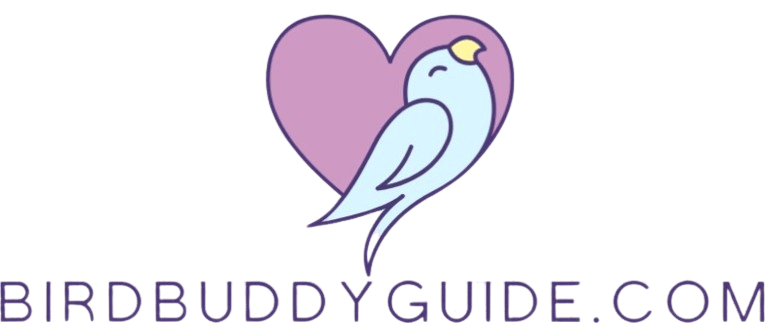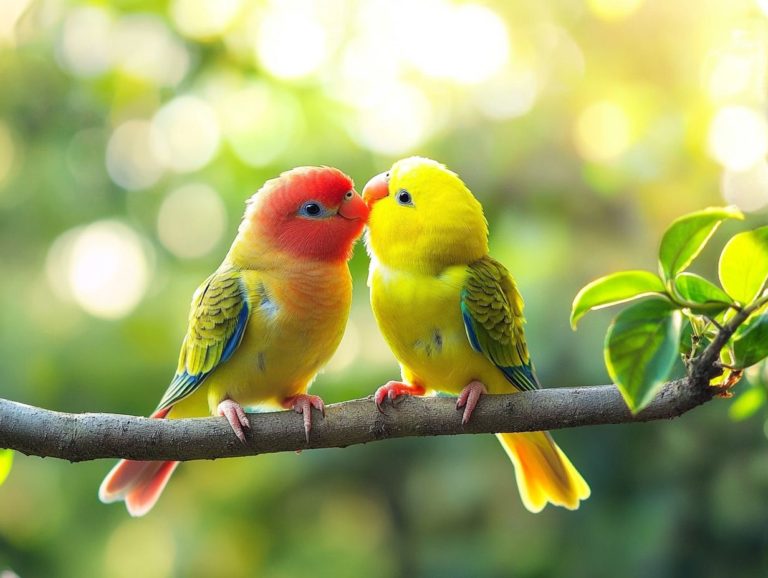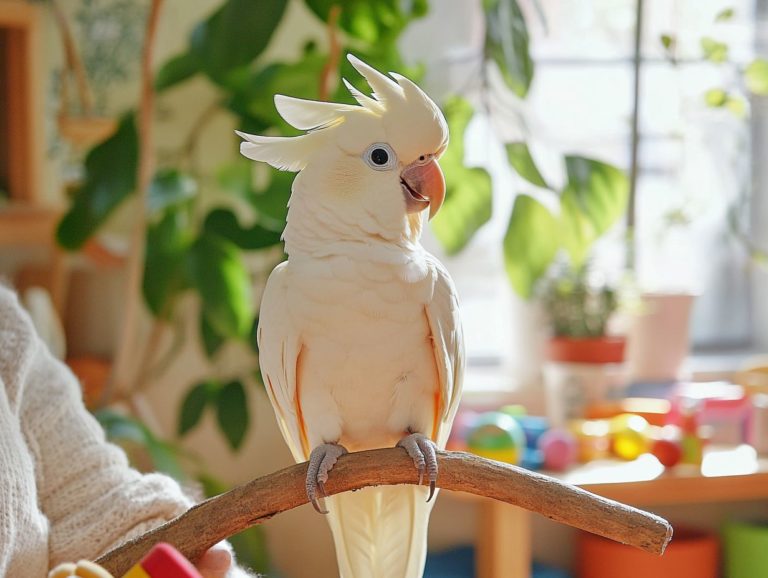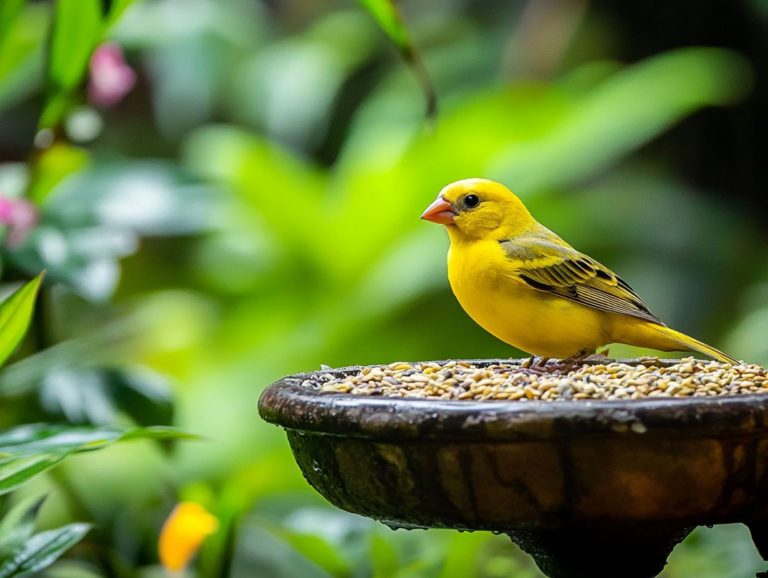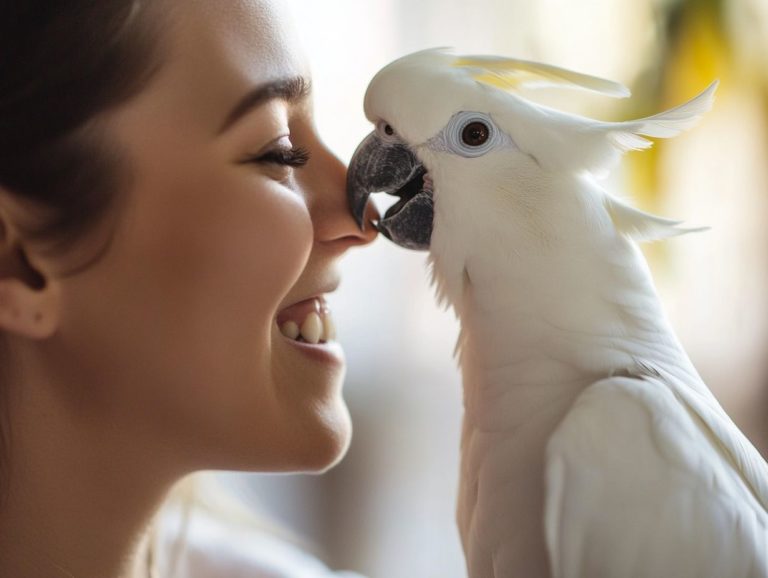10 Signs of a Happy Parakeet
Ready to unlock the secrets of your parakeet’s happiness? Understanding your parakeet’s behavior is essential for ensuring a joyful and healthy life for your feathered companion.
This article delves into the common behaviors of parakeets, highlighting the signs that indicate your pet is content. We offer insights on how to create a nurturing environment that caters to their specific needs. This article also addresses common pitfalls to avoid and provides strategies for supporting your parakeet’s mental health.
Explore these insights to discover how to boost your parakeet s happiness and strengthen the bond you share!
Contents
Key Takeaways:
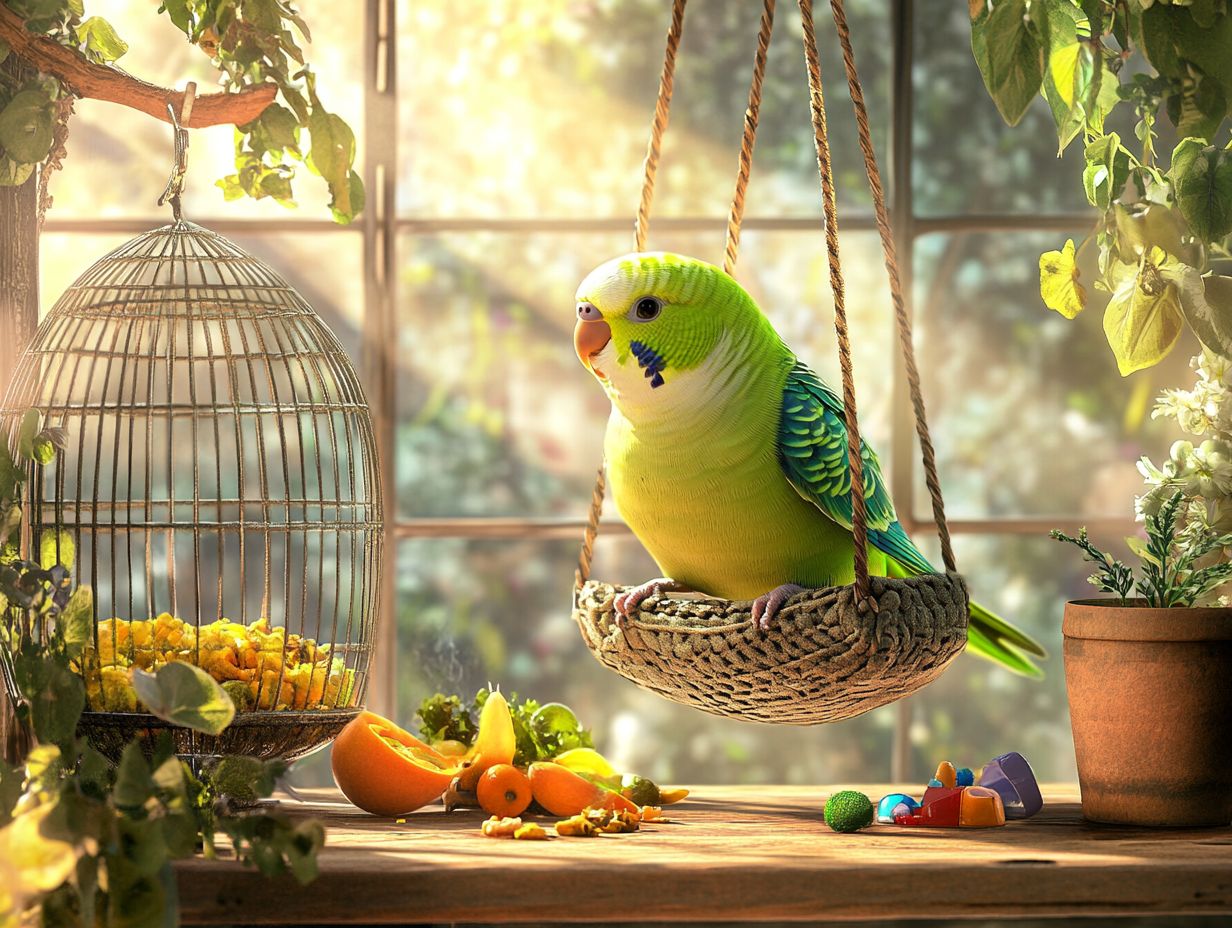
- Look for physical signs like bright, smooth feathers and a healthy body weight to determine if your parakeet is happy.
- Observe your parakeet’s behavior for cues of contentment such as singing, playing, and interacting with you.
- Create a happy environment by providing essential elements like a spacious cage and stimulating toys.
Understanding Parakeet Behavior
Understanding parakeet behavior is crucial for you as a pet parent who aims to create a healthy and stimulating environment for your feathered companion. Parakeets, also known as Budgerigars or Melopsittacus undulatus, display a captivating array of behaviors shaped by their social nature and habitat.
Actions such as head bobbing, eye pinning, and wing stretching reveal their physical and emotional well-being. These behaviors also serve as vital elements in their communication and bonding with both humans and fellow birds, enhancing their parakeet companionship. However, if you notice any concerning changes, it’s important to recognize signs your bird may need a vet visit.
Common Parakeet Behaviors and What They Mean
Observing common parakeet behaviors like head bobbing, wing stretching, chewing, and playing with toys offers valuable insights into their mood and overall health. It’s important to be aware of changes in behavior, as 6 signs your cockatiel may be sick can sometimes be subtle. By understanding these behaviors, you can gauge your parakeet’s emotional state, revealing whether they feel happy, excited, or perhaps even anxious.
For instance, frequent head bobbing often signals joy or affection. Wing stretching indicates a desire to exercise or a moment of contentment.
Chewing is more than play; it helps keep their beaks healthy. This activity promotes their overall well-being. Engaging in playful activities not only enhances your parakeet s happiness but also fosters a stronger bond between you and your feathered friend.
This highlights the importance of providing a stimulating environment that caters to their social needs and innate curiosity, especially since they are social birds.
Signs of a Happy Parakeet
A happy parakeet displays a range of signs that vividly reflect its well-being, offering you peace of mind about your feathered friend’s health and happiness. To recognize these signs, you can observe joyful vocalizations and playful physical behaviors, which showcase the strong bond between you and your parakeet. For more detailed information, check out what are the signs of a happy pet bird.
Recognizing these indicators is essential for providing effective care, as they reveal the nurturing environment in which your bird can truly flourish.
Physical Indicators of Happiness
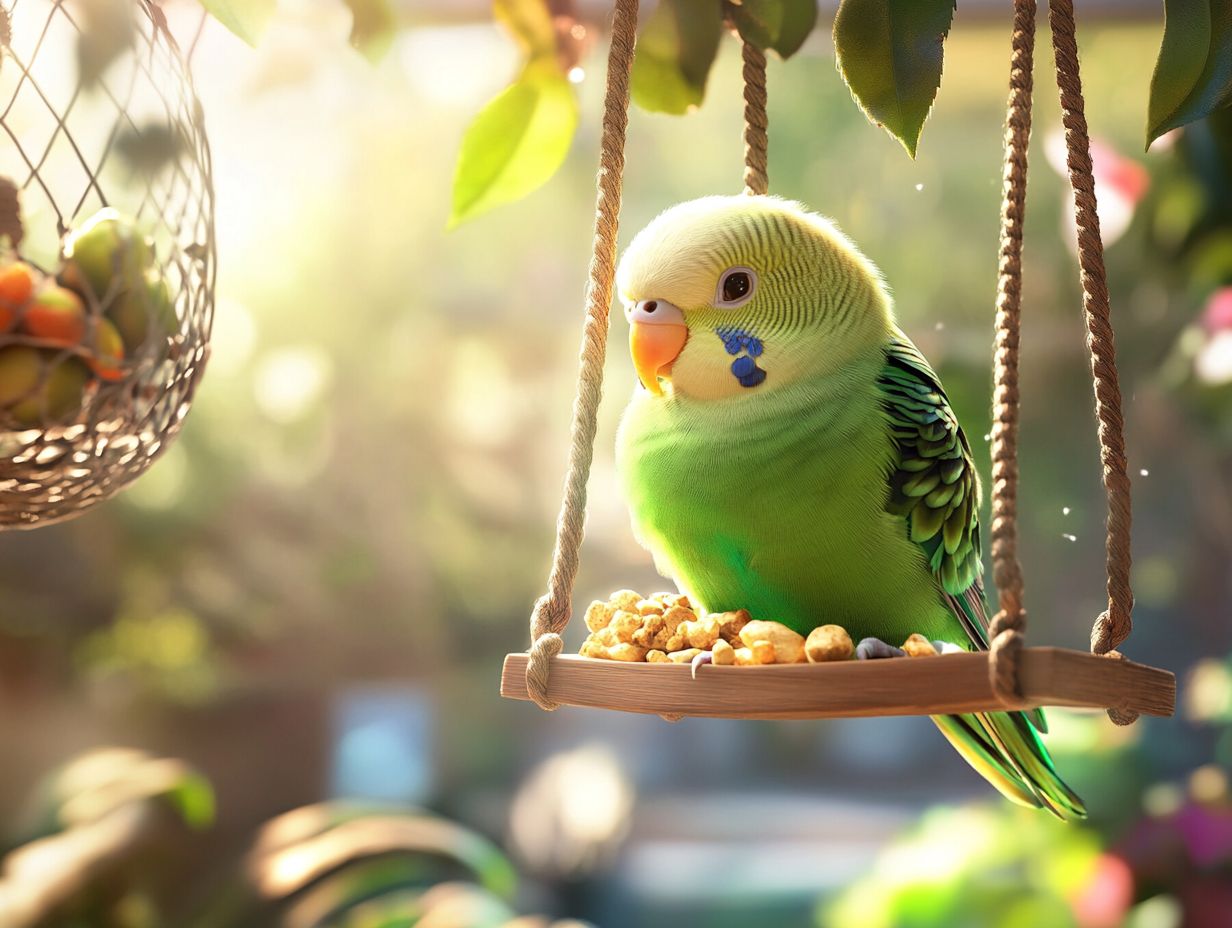
Physical indicators of a happy parakeet include bright plumage, active grooming, and frequent preening behaviors. Recognizing these signs is crucial for parakeet care, and you can learn more about them in the top 10 signs of a healthy pet bird.
These behaviors are far from superficial; they play a crucial role in their health. A parakeet that consistently engages in grooming demonstrates an understanding of personal care that speaks volumes about its emotional condition.
The act of preening helps remove dust and debris from feathers while promoting both a healthy appearance and functionality. Regular grooming offers comfort and security, nurturing a deeper bond between the bird and you.
When these delightful creatures feel their best, they’re more inclined to interact with their environment. Understanding parrot behavior can lead to vibrant exchanges that enhance their sense of companionship and happiness.
Behavioral Cues of Contentment
Behavioral cues of contentment in parakeets often reveal themselves through playful antics, like interacting with toys and engaging in eye pinning. To further understand your pet’s emotions, explore how to tell if my bird is happy. These charming behaviors indicate a happy state of mind and showcase the strong bond your parakeet shares with you.
When your bird enthusiastically swings on a perch or joyfully chases after a toy, it’s a clear sign of trust and comfort in its environment. Social interactions, such as grooming themselves with their beaks and singing, further amplify this sense of joy. To ensure your pet is thriving, look out for signs your finch is happy and healthy. You might notice your parakeet chirping delightfully while fluttering its wings, creating a vibrant atmosphere in your home.
Recognizing and encouraging these behaviors is crucial. They play a significant role in fostering a nurturing relationship and enhancing parakeet bonding. This allows you to connect more deeply with your feathered companion.
Creating a Happy Environment for Your Parakeet
Want to see your parakeet thrive? Let s explore how to create a happy environment! Creating a joyful environment for your parakeet is crucial for its physical and mental well-being. It involves careful consideration of its habitat, social needs, and opportunities for exercise.
A thoughtfully designed habitat should feature a variety of perches, toys, and a play gym. This enables your feathered friend to engage in natural behaviors and live a fulfilling life. This attention to detail elevates the quality of your parakeet s life and deepens the bond between you and your vibrant companion.
Essential Elements for a Happy Parakeet
To ensure your parakeet thrives, focus on essential elements like:
- Ample space
- Balanced diet including grain-based options
- Interactive toys that cater to their natural instincts
Fresh fruits and vegetables are key to their nutritional health. A spacious cage allows for much-needed movement and exercise. Incorporating environmental enrichments such as perches at varying heights and swings keeps them engaged and physically active.
Social interaction is equally important. Whether it’s companionship with other birds or playful moments with you, these interactions significantly enhance their mood and help reduce stress. By prioritizing these aspects, you can create a vibrant habitat that nurtures their health and happiness.
How to Bond with Your Parakeet
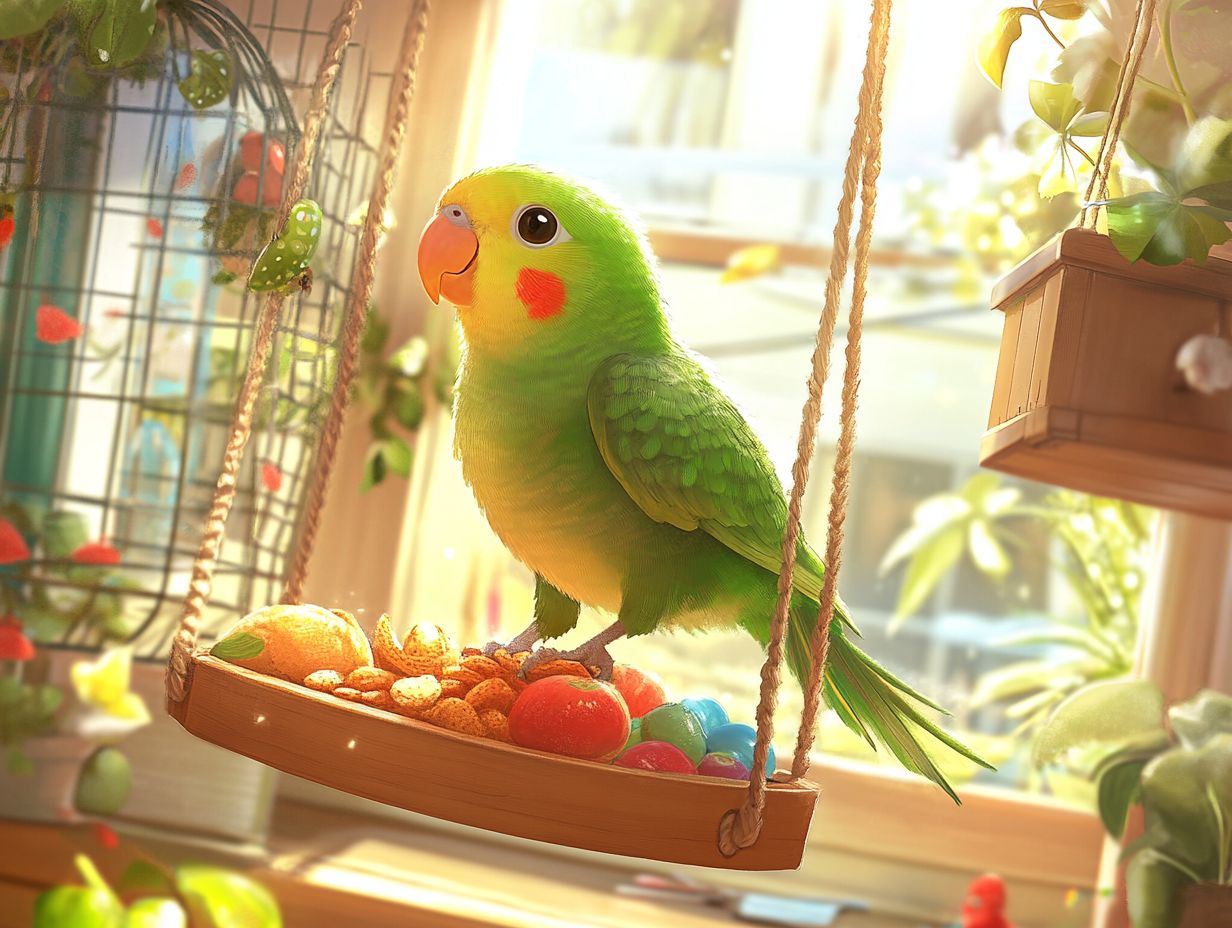
Bonding with your parakeet is essential for cultivating trust and companionship. This can be achieved through regular interaction, understanding their bird behavior, and playful engagement.
Creating a safe and inviting environment is key to nurturing this bond. Begin by speaking softly and consistently around your bird; this helps it acclimate to your presence. Incorporate daily routines, such as gentle cage cleaning or offering fresh seeds, to establish a comforting pattern that reassures your parakeet of your care.
Engaging in playful activities, like introducing toys or encouraging your bird to step up onto your finger, allows for shared experiences that deepen your connection. Always remain attuned to your parakeet s body language. Signs of comfort, such as a relaxed posture or cheerful chirping, indicate that trust is blossoming over time.
Common Mistakes that Can Make a Parakeet Unhappy
Common mistakes that pet parents make can lead to an unhappy parakeet, ultimately affecting its health and overall well-being. Understanding these pitfalls is essential for ensuring that your feathered friend stays content and healthy.
By steering clear of these errors and embracing best practices in parakeet care, such as providing a balanced diet, you can cultivate a nurturing environment that promotes happiness and companionship.
Avoid these mistakes to keep your feathered friend happy and healthy!
Things to Avoid for a Happy Parakeet
Keep your parakeet happy by skipping practices that can stress them out, such as neglecting their need for social interaction.
Neglecting daily social interaction or placing their cage in a busy area can significantly impact their mood. A monotonous diet can lead to nutritional deficiencies and make them vulnerable to health issues.
Sudden temperature changes or exposure to harsh chemicals can also affect their comfort. To create a more suitable habitat, ensure their living space is spacious and enriched with engaging toys, while also placing it in a calm, stable environment.
Providing a well-balanced diet that includes fresh fruits and vegetables is essential for their overall well-being.
Taking Care of Your Parakeet’s Mental Health
Caring for your parakeet’s mental health is essential to its overall well-being. Pay close attention to its need for stimulating activities and emotional connections.
Offer a diverse range of challenges and social interactions to prevent boredom and stress factors that can adversely affect your parakeet’s mental state.
It’s important to recognize signs of mental distress; early intervention can lead to a healthier and happier companion.
Stimulating Activities and Toys
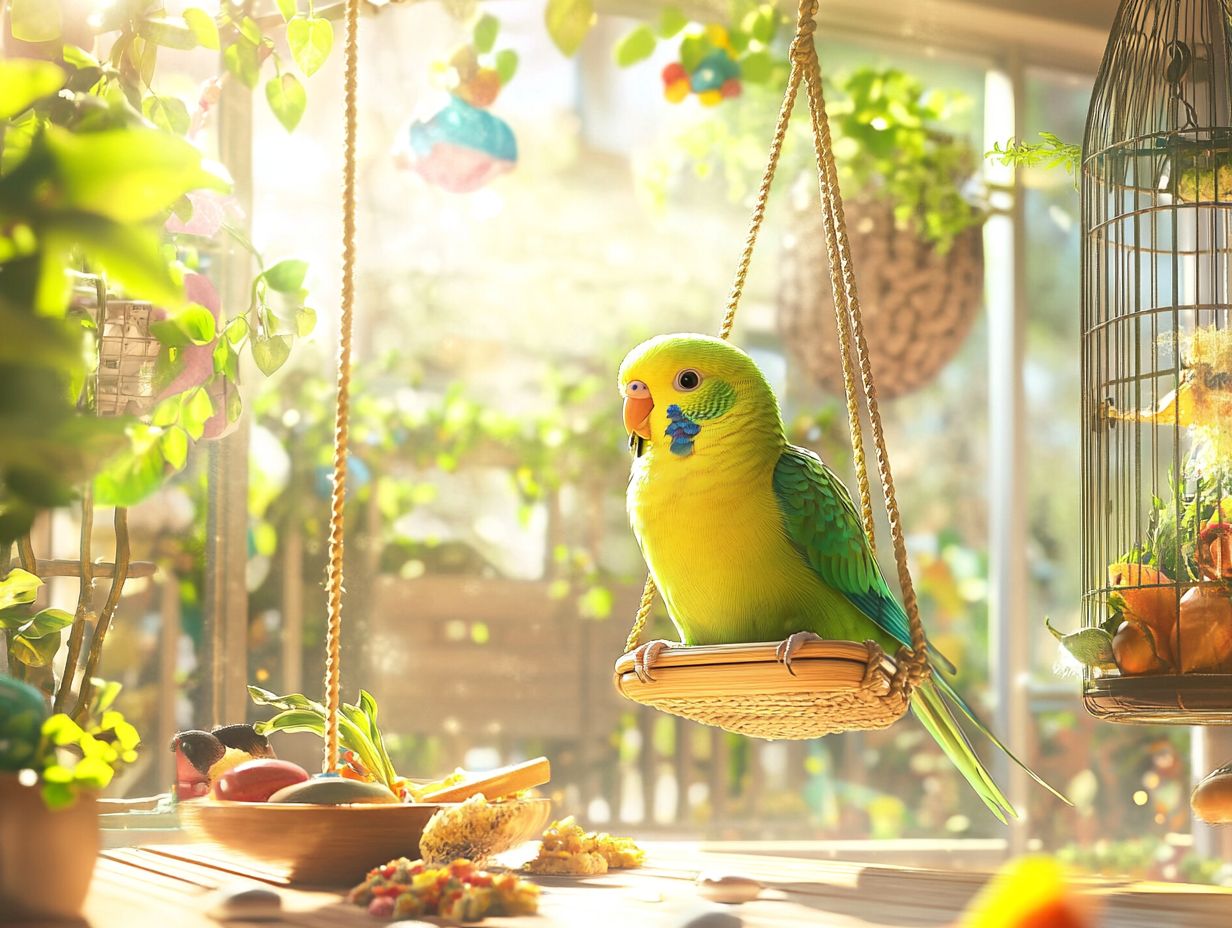
Stimulating activities and toys are vital for keeping your parakeet engaged and content, as they cater to their instinctual needs and foster a deeper bond.
Incorporating a variety of engaging toys like swings, ladders, and chewable objects can enhance the emotional well-being of these vibrant birds.
They thrive on interactive play, which keeps them physically active and sparks their natural curiosity and intelligence.
Activities like foraging games, where they search for hidden treats, encourage exploration and problem-solving. Social interaction through shared playtime strengthens the connection between you and your parakeet.
By creating a rich environment filled with diverse toys and activities, you re crafting a fulfilling life for your feathered companion, paving the way for delightful interactions that deepen this unique relationship.
Signs of Mental Distress and How to Address Them
Signs of mental distress in parakeets can show up as changes in behavior, lethargy, or aggression. Act fast if you notice any changes your parakeet depends on you!
These behaviors may indicate something is off in their surroundings or overall well-being. If your parakeet suddenly becomes quiet or withdraws from interaction, it might be feeling overwhelmed or lonely.
Evaluate your pet’s surroundings. Introduce environmental enhancements like new toys or perches for stimulation and enrichment. Ensure they receive regular social interaction engage with them or consider introducing a compatible bird friend.
Frequently Asked Questions
For more information on how to care for your parakeet or to share your experiences, don t hesitate to reach out!
What are the signs of a happy parakeet?
- Active personality: A joyful parakeet is bursting with energy! It constantly chirps, plays, and explores its surroundings.
- Good appetite: A content parakeet eagerly enjoys its favorite foods. A healthy appetite is a great sign!
- Feather preening: Your happy parakeet will groom its feathers regularly. This keeps them shiny and well-maintained.
- Social behavior: A cheerful parakeet loves to interact! It shows affection towards other birds and its human friends.
- Playful behavior: Expect to see your parakeet hopping, swinging, or even hanging upside down while playing.
- Making sounds: A cheerful parakeet makes a range of sounds, from chirps to whistles. It might even copy human speech!
- Curiosity: A happy parakeet is curious about its environment. It explores new toys and objects with enthusiasm.
- Healthy appearance: Look for bright, alert eyes and smooth feathers. A well-groomed bird is a happy bird!
- Peaceful demeanor: A calm and relaxed parakeet shows no signs of stress or anxiety.
- Playful interactions: Your parakeet enjoys playful games with you. It loves learning new tricks!
Watch for these signs to ensure your parakeet is truly happy and healthy!
